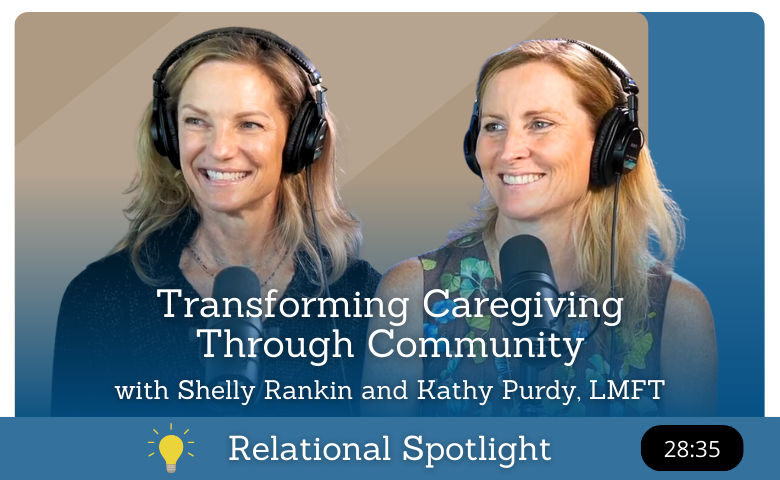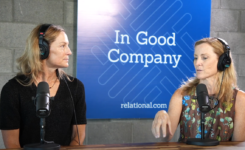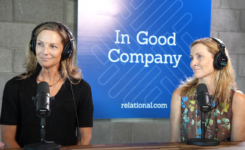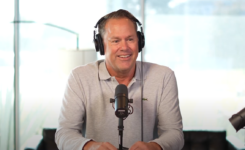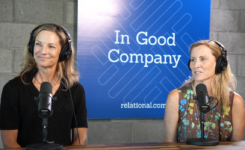Visit KatShelly Rankin:
Well, we had—I kind of had this idea because, gosh, 30 years ago, I found myself in a caretaking situation with my dad. And it was very difficult, by all means, but I had some aha moments and found some silver linings in the situation. I was really reaching out for a community because I didn’t want to burden my friends with what I was going through. I wanted to keep my friends just for the fun events of my life. I didn’t want to go on a walk with a close friend and have the whole walk be about what I was going through with my dad. Fast forward to the present moment, and now I’m in a caretaking position with my mom.
Shelly Rankin:
Again, I’m finding that so many people in our community are going through almost the same exact thing. So I just kind of threw it out there that I was going to start a caregivers support group. People didn’t just say, “Oh, that’s a great idea.” They said, “Shelly, please do that. I need this so badly.” I got feedback like, “I feel like I’m in a silo, doing this all on my own.” I thought, it doesn’t need to be that way. There are so many people going through the same scenarios. I talked to our daughter Annie, who’s studying to be a therapist, and she said, “Mom, you can’t just throw together a group. You need to have it structured.” So she had the idea of talking to Kathy, who’s a dear friend of mine, and maybe giving it a clinical underpinning. So I ran the idea past her, and she said…
Kathy Purdy:
Oh my gosh, I’m really looking into doing more group-structured support. So we had some brainstorming sessions, and shockingly, it just unfolded organically. It’s been a really beautiful process. We had our first meeting today.
Mike Rankin:
That’s amazing. Kathy, share your experience.
Kathy Purdy:
I was so happy when Shelly brought this to me because I had been really researching and studying how to do groups that could actually help and be transformative. Yes, it’s about coming together as a community, but it’s also about leaving with new ways of doing things—having an experience where you think, “Oh, I can do this differently now.” Something actionable. The timing was perfect because everything I’d been working on fit right in, and then we would talk, and the curriculum came together so well. As we started asking people what they needed, it was a very common story—guilt, balancing life—these themes helped us line up who we wanted to bring in to support the group, including specialists.
Mike Rankin:
Before we get into a thumbnail sketch of the curriculum, Kathy, take me back a little bit. Your clinical background has been more one-on-one. What motivated you to move into group work?
Kathy Purdy:
For about 16 years, while raising my girls, I was going five times a year to group connection experiences and learning about deeper group work. Then, when I went back to individual therapy as a therapist, I ran a small group of 60 people, so I started in that space. But for the past six or seven years, it’s been mostly individual work. I craved that feeling of being in a room together, and the power of group work transcends what each individual has. You can have a transformative experience in a group setting that’s hard to achieve one-on-one. It felt like I could touch more lives with group work. It’s more expansive.
Mike Rankin:
Yeah, and I can feel it, even here in the studio. In a world where we’re spending so much time on screens, with the development of AI and all these technological advances, there’s something special and magic about getting humans together in a room. You’ve clearly struck a chord with a lot of people—not only in the need to share what they’re going through as caregivers but also to connect with others without screens or devices.
Mike Rankin:
So in terms of the curriculum development, share a little bit about how that evolved and what some of the key elements are.
Shelly Rankin:
We started by working on what our goals were for the program and what we wanted to accomplish in each meeting. It could easily turn into just time to share, but we wanted it structured. We review different feelings and topics that caregivers go through. For example, we’ll have an attorney come in to discuss legal issues—elder abuse, scams, and when to take the car keys away from a parent. We’ll also have a gerontologist, who I see as the voice of the parent, which is so important. The parent is still the parent, and the child is still the child, and there’s a lot of noise between them.
Shelly Rankin:
We’ll have an educational piece at each meeting, and we also include a mindful practice. I was initially hesitant about the mindfulness part, thinking we didn’t need to spend much time on it. But Kathy was very calm and insistent, making sure we spent the full time on it today. And it was so impactful.
Kathy Purdy:
It’s interesting because we wanted to address areas where caregivers struggle and tie in the missing skills needed for resilience. For example, the first practice we taught today was about landing in the group and becoming aware of what you’re even thinking or feeling so that you can share. It’s also about being a good listener—listening compassionately without trying to fix or analyze the other person. This practice helps people become more present and sets their brain chemistry in a good place for participation.
Shelly Rankin:
Exactly. Someone in the group even said, “Five minutes is a long time,” but Kathy responded, “Any shorter would rob you of the opportunity to feel uncomfortable.” And the feedback we got was so positive. People appreciated that they didn’t have to fix the speaker’s problem—they were just there to listen and hold space. It brought clarity, and that sense of calm is something people can take with them into stressful situations outside the group.
Mike Rankin:
That’s fantastic. I know there’s a lot of emotion that comes with caregiving, and guilt is one of the emotions you mentioned earlier. How does guilt play a role in caregiving, and how does one cope with it?
Kathy Purdy:
Guilt is a big one. It’s integrated into the curriculum. We’ll teach about emotions and how they’re there to tell us something. Guilt, for example, is telling you that you’re off track in some way. But you have to check in with yourself—are you really off track, or are you just juggling impossible choices? There’s no perfect decision in caregiving. We’ll talk more about how to hold space for those conflicting emotions and make peace with them.
Mike Rankin:
Resentment is another emotion that seems to come up often—whether it’s towards a parent or siblings. What have you discussed around that?
Shelly Rankin:
Resentment is definitely real. It’s an emotion that many caregivers feel, but there’s often shame around it. People aren’t proud of feeling resentful, but it’s normal. Acknowledging that others feel the same way can be really validating.
Kathy Purdy:
Exactly. It’s important to name it and validate it instead of hiding it. We can be resentful and still appreciate the time we spend caregiving. There’s no need to judge ourselves harshly for feeling that way. It helps to recognize that it’s just one part of the whole picture.
Mike Rankin:
Who are the participants in your group, and how do you see the group evolving?
Shelly Rankin:
Right now, it’s all women, but we’re open to men joining. Caregivers are not just women, and I think men could benefit from sharing their experiences too. The group grew by word of mouth, and we had 17 people at the first meeting. We didn’t want to turn anyone away, but we could easily have a waitlist.
Kathy Purdy:
Yes, and I think men could definitely add to the group. Right now, it’s mostly women caring for parents, but caregiving can take many forms—people caring for spouses, children, or others with disabilities. There’s a shared understanding in the group, even without saying everything out loud.
Shelly Rankin:
Exactly. We all share this common experience of caregiving. The group has humor, vulnerability, and understanding. People can take the gloves off, be honest, and say, “I’m pissed off.” And everyone gets it. The tears come, but they don’t feel heavy. They feel like a release, and it’s uplifting to see people supporting each other through those moments.
Mike Rankin:
That’s incredible. Thank you both so much for your time. If someone wants more information, what’s the best way for them to reach out?
Kathy Purdy:
They can visit my website at kathypurdylmft.com.
Mike Rankin:
Great. Thank you both for being here and for all the amazing work you’re doing with Caregivers Connect.


